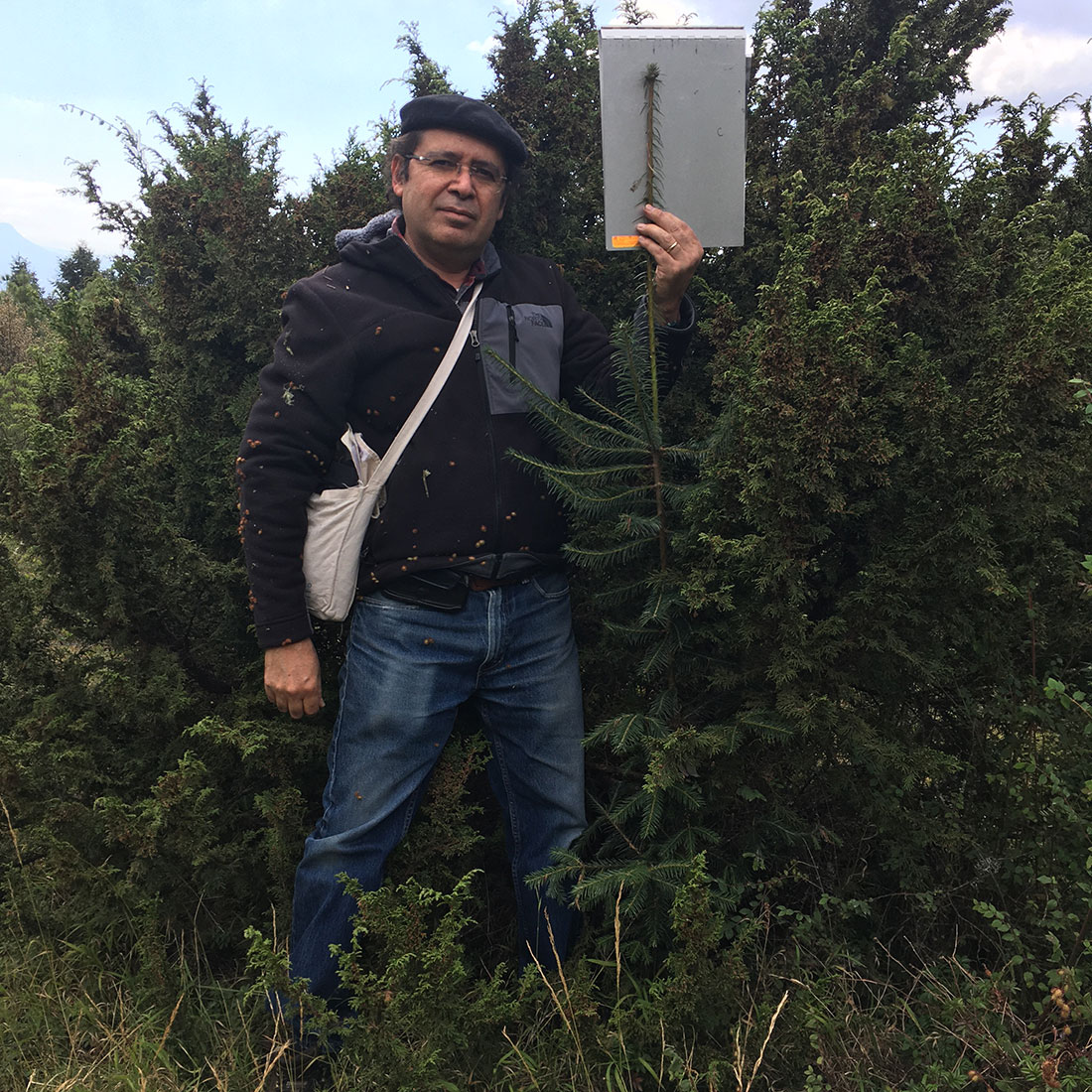IN MARCH, as the spring sun drives away cold mists from the mountains of Michoacán, Mexico, tens of millions of monarch butterflies begin to wake up. After a long winter sheltering in oyamel firs, the butterflies flutter about like brilliant orange confetti, readying themselves for a migration that will send them fanning out across North America.
It’s an “absolutely fantastic” sight, says biologist Cuauhtémoc Sáenz-Romero, researcher at University of Michoacán. Not only do these forests harbor 99% of the world’s monarchs, they’re doubly valuable as a source of tourism income for local communities. These days, however, a pall is hanging over this vision in orange. The region’s climate is rapidly becoming too hot for the oyamel firs, which can only survive in cool, moist conditions. By the end of the century, Sáenz-Romero says, heat, droughts, storms and pests will have wiped out all oyamel in the Monarch Butterfly Biosphere Reserve — along with their cloaks of oyamel- dependent monarchs.

Photo Credit: Courtesy of Cuauhtémoc Sáenz-Romero
To save the firs and the butterflies, Sáenz-Romero wants to do something once considered unthinkable: plant a new forest somewhere else. To see the future of Michoacán’s oyamel, all you have to do is look up. The mountains’ peaks will remain cool and wet, perfect weather for oyamels. In fact, the trees are already reproducing upslope, but Sáenz-Romero estimates they’d have to increase their pace by a factor of 10, or even 100, to keep up with the speed of climate change.
In partnership with local towns and land collectives, including the non-governmental organization “Fondo de Conservación del Eje Neovolcánico,” Sáenz-Romero is stepping in to pick up the slack. Last July, his team planted oyamel seedlings across five sites of varying altitudes, four of them on Nevado de Toluca, a higher mountain than the Monarch Biosphere Reserve, and will study their survival over the next few years.
“The challenge is how much we can move the seedlings to a higher altitude without killing them,” he says. The hope is that the firs will thrive on even the highest slopes, and that the monarchs can eventually alter their ancient migration routes to follow the oyamel uphill.
This is a first-of-its-kind study in Mexico, and similar research is just beginning to gain ground in other countries. Planting trees at higher elevations or to the north of their natural range a process called assisted migration — was long taboo in conservation circles. Now, as climate change advances at a breakneck pace, it’s swiftly becoming clear that many species will go extinct without active relocation.

Photo Credit: Erika Gómez-Pineda / Centro de Investigaciones en Geografía Ambiental
Sáenz-Romero is boosting his seedlings’ odds by interplanting them with native shrubs in the aster family. Research has found that the shrubs’ particularly bushy shape casts shade that protects young oyamel from harsh sun, improving their four-year survival rates from roughly 10% to 90%. This project marks the first time these shrubs have been grown in nurseries or used in reforestation work adding another layer of complexity, as there is essentially no information about when these plants set seed or even how fast they grow.
American Forests has worked with local partners in Michoacán since 2006, and has planted more than 1 million trees to restore monarch wintering grounds. Because the organization has already started planting trees at higher elevations both in Mexico and in the United States, funding Sáenz-Romero’s research was a natural fit. According to Austin Rempel, American Forests’ senior manager of forest restoration, “he’s doing the basic science that could make all other monarch plantings better, not to mention assisted migration work elsewhere in North America.”
Watching climate change upend the natural cycle of forest regrowth has “been hard to swallow as a biologist,” says Sáenz-Romero. What he learned as immutable fact in his university classes is fast becoming out- dated as atmospheric CO2 levels creep ever upwards. For Michoacán’s forests, the only way to avoid tragedy is to push the oyamel to their limits and hope that they, and the monarchs, can adapt. “Our responsibility as researchers is to find ways to plant seedlings today that will be healthy trees in the future,” Sáenz-Romero says. “The trees will otherwise die where they are because they cannot walk.”